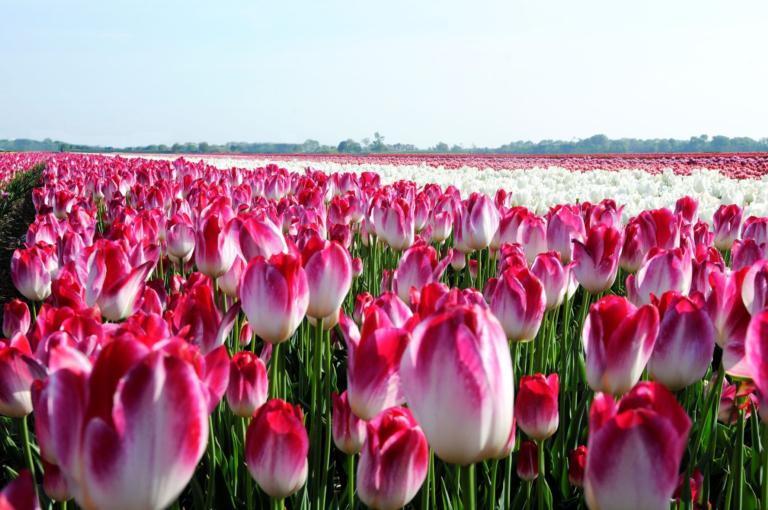
The world-famous Bulb region is a national pride and of great value to the Dutch economy. But what about the future of the region? Facilitated by Naturalis Biodiversity Center, entrepreneurs, researchers and policymakers are committed to the project: 'Together towards a circular Bulb region', to turn their current concerns into solutions.
Questionsof bulb growers
The project Together to a circular Bulb region has been set up to work together on a future-proof Bulb region based on questions from bulb growers, other entrepreneurs and industry organizations. The central question in the project is: how can knowledge contribute to the transition to a circular economy, better health, more sustainable use of raw materials, and a higher quality of the working and living environment with more nature and biodiversity?
Higher quality requirements
“Met bollen en bloemen
“With top quality bulbs and flowers, free from diseases, grown in a profitable way in harmony with the environment, without emissions and with responsible use of the natural resources of water, energy, soil and biodiversity”, is the ambition of the KAVB and Greenport Dune and Bulb region in Towards a Vital Cultivation 2030.
“And that is easier said than done: the quality requirements for flowers and bulbs are increasing, the number of permitted crop protection products is decreasing, the cultivation grounds are under pressure due to legislation and regulations to produce more sustainably and it is difficult to maintain soil fertility. ” explains Andries Middag, program manager of Greenport Dune and Bulb region.
Sustainabilityis an opportunity
Daarom werken in het project verschillende partijen samen om oplossingen te bieden aan de sociale en economische kennisvragen uit de sector, en de kleinere kennisvragen vanuit de ondernemers. In de Greenport Duin- en Bollenstreek werken al veel bedrijven samen, onder andere aan duurzaamheid. “Omdat duurzaamheid niet alleen noodzakelijk is, maar ook een kans”, aldus Middag.
De unieke samenwerking tussen lokale ondernemers, beleidsmakers en onderzoekers maakt het project vernieuwend. Koos Biesmeijer, wetenschappelijk directeur van Naturalis: “Als kennispartijen dragen we graag bij aan die ambitie van de ondernemers: een natuurinclusieve, weerbare bollenteelt waaraan de ondernemer geld verdient en de maatschappij en natuur beter van wordt.”
OverSamen naar een circulaire Bollenstreek
That is why various parties are working together in the project to offer solutions to the social and economic knowledge questions from the sector and the smaller knowledge questions from entrepreneurs. Many companies are already working together in the Greenport Dune and Bulb region, for example on sustainability. “Because sustainability is not only necessary, but also an opportunity,” says Middag.
The unique collaboration between local entrepreneurs, policy makers and researchers makes the project innovative. Koos Biesmeijer, Scientific Director of Naturalis: “As knowledge parties, we are happy to contribute to the ambition of the entrepreneurs: a nature-inclusive, resilient bulb cultivation that earns the entrepreneur money and benefits society and nature.”
Notefor editors
More information about the project can be found at Together towards a circular bulb region. Or for substantive questions, contact Koos Biesmeijer via koos.biesmeijer@naturalis.nl or project leader Marten Schoonman via marten.schoonman@naturalis.nl.
For general questions, you can contact the Naturalis communication department via communicatie@naturalis.nl or 06-35 11 29 99.
De image above (credit: Greenport Dune and Bulb region) can be found in higher resolution in this press kit, which also contains additional image material.